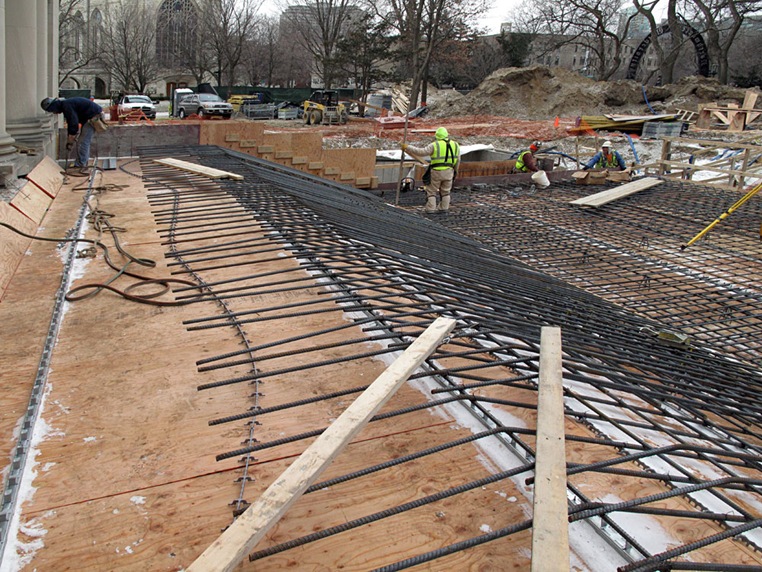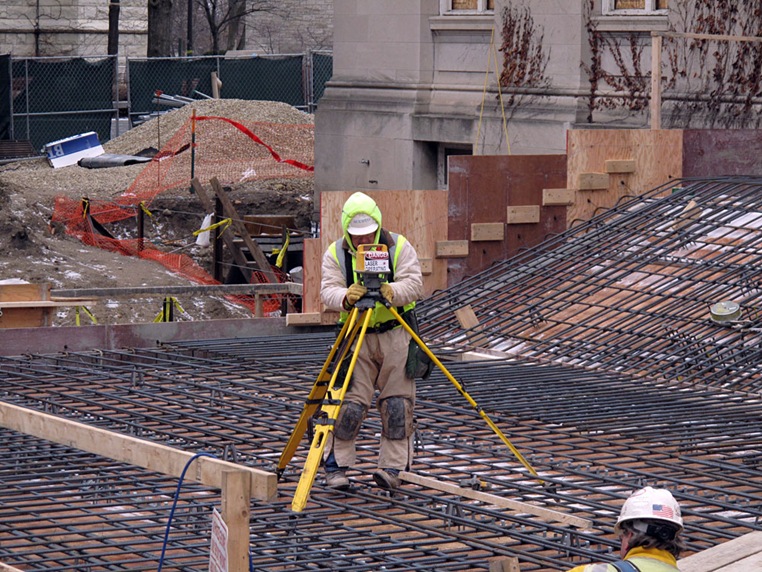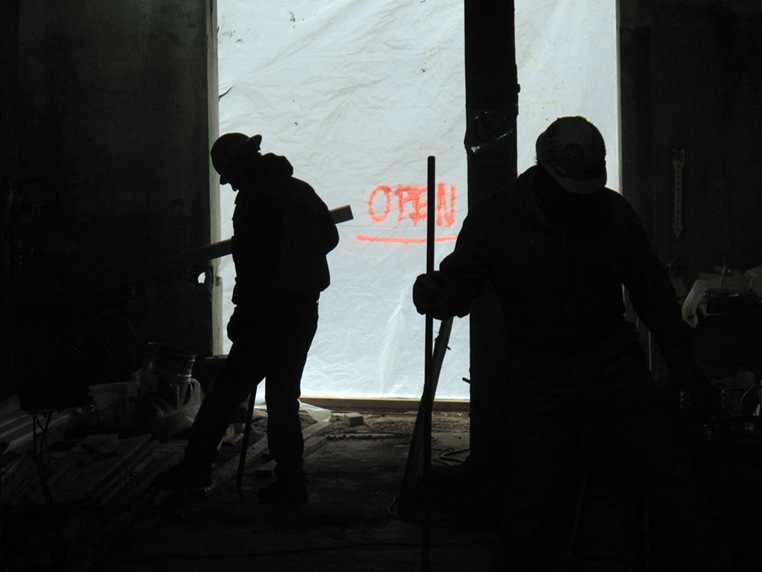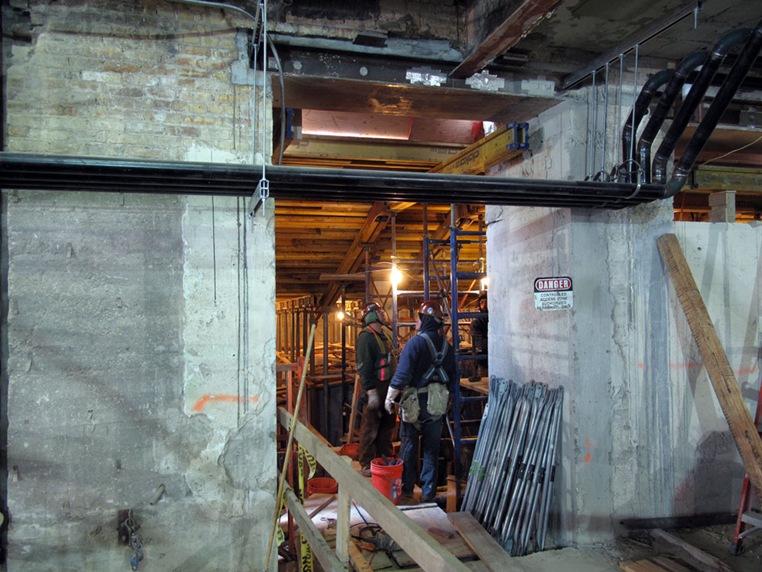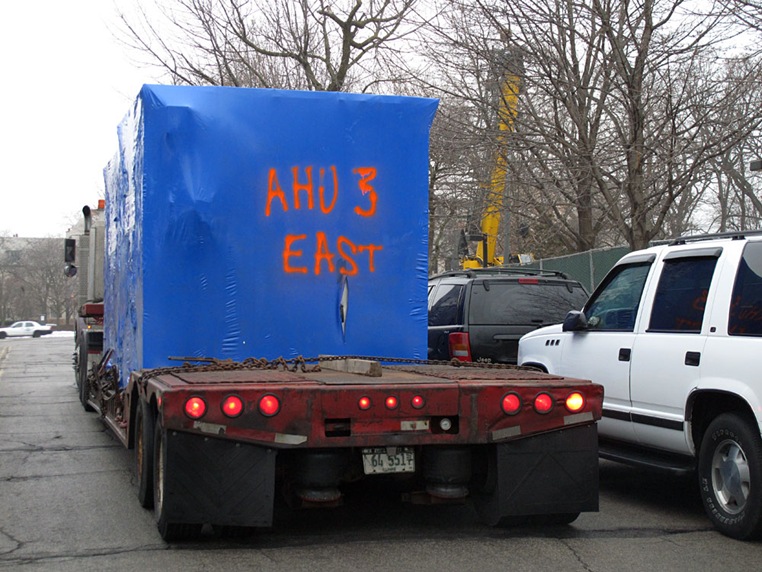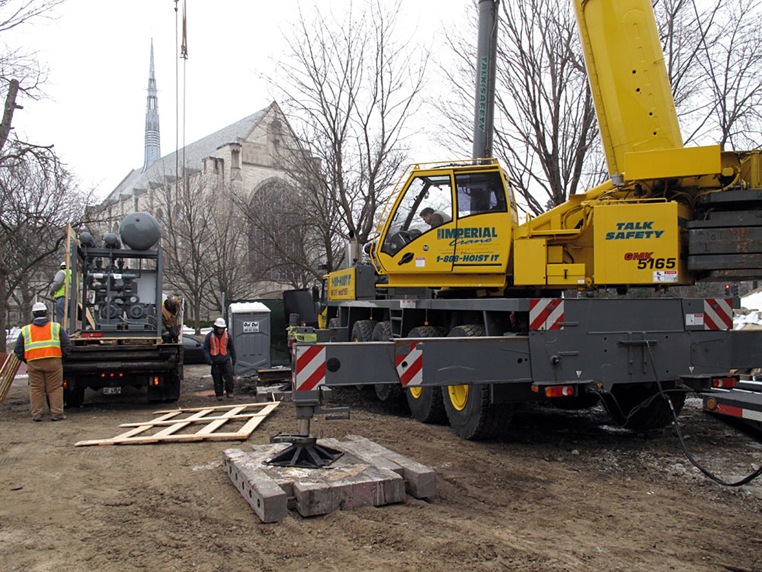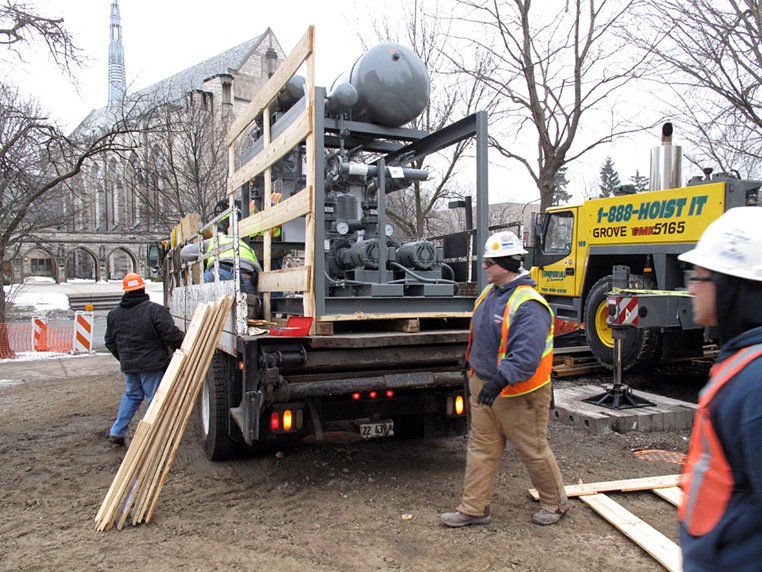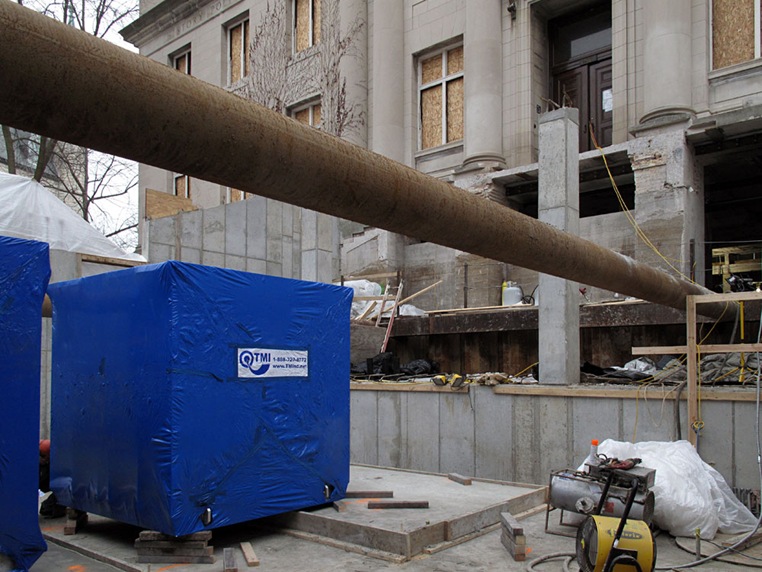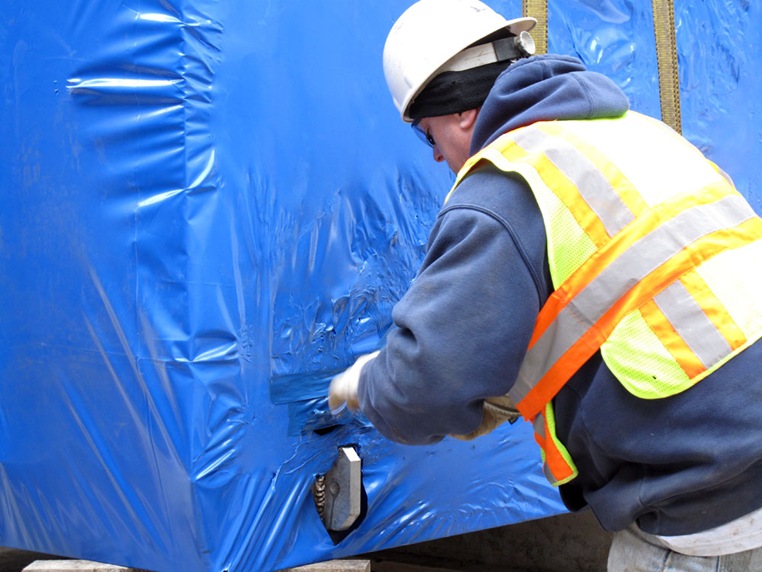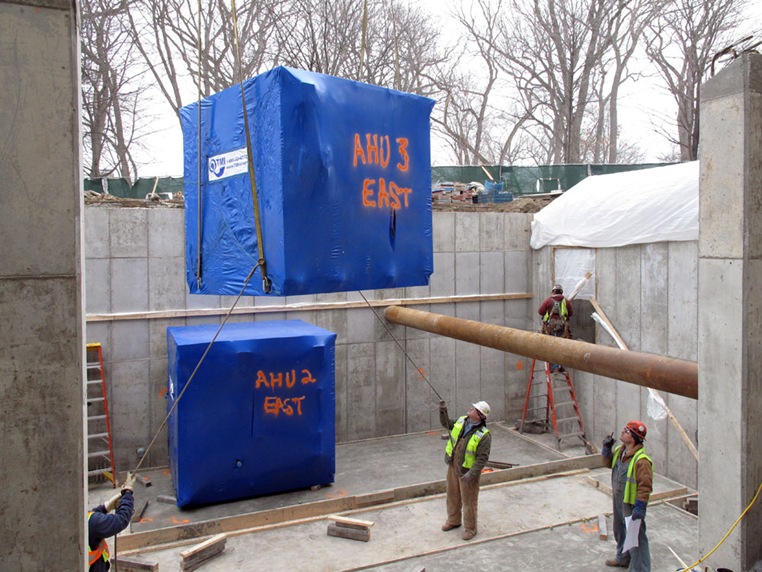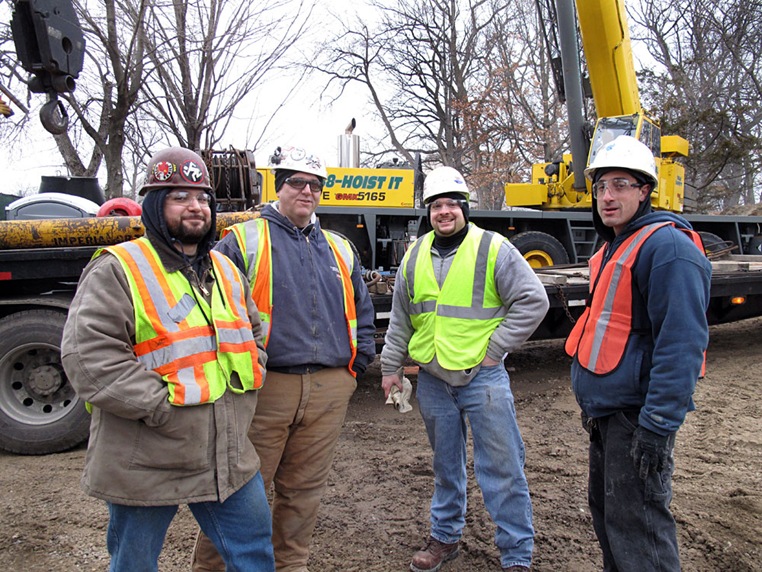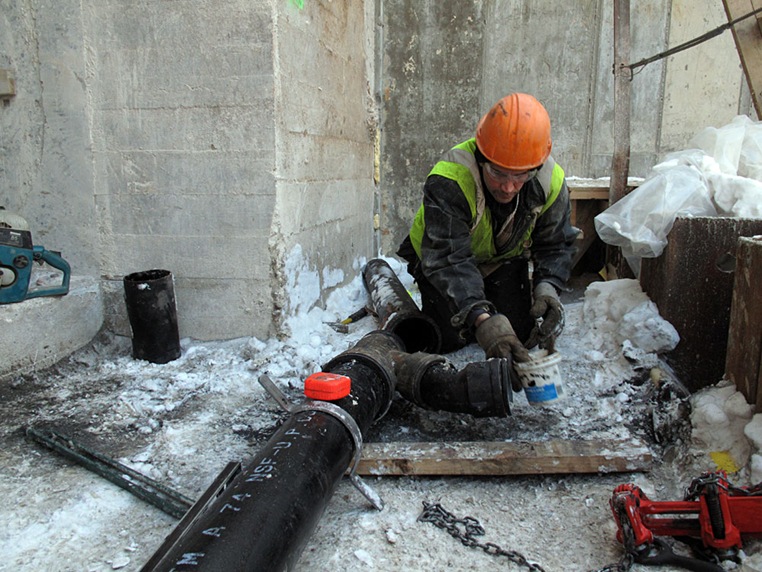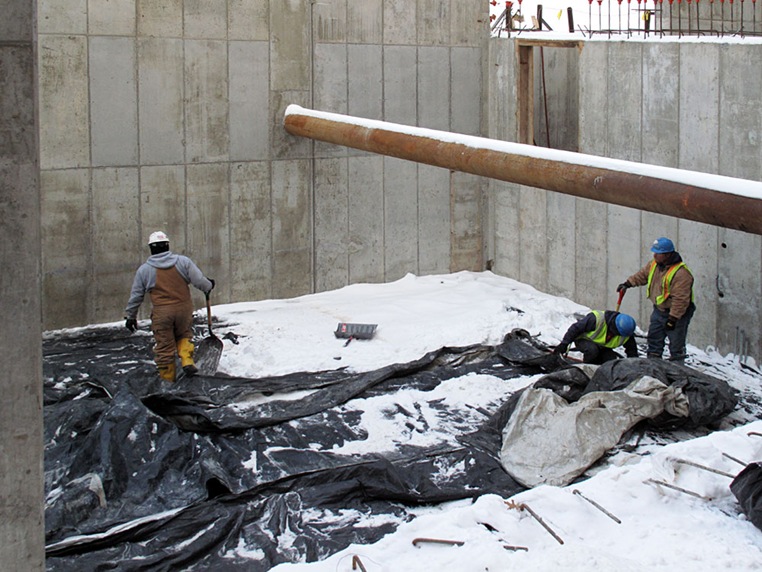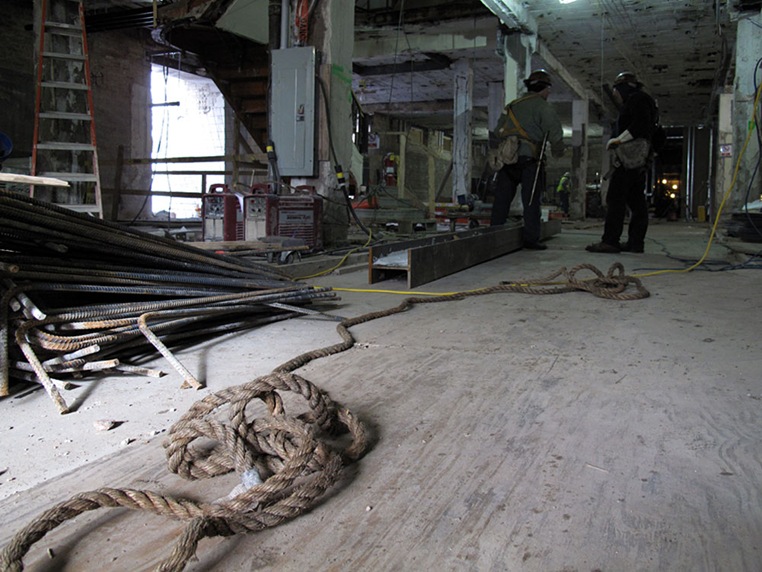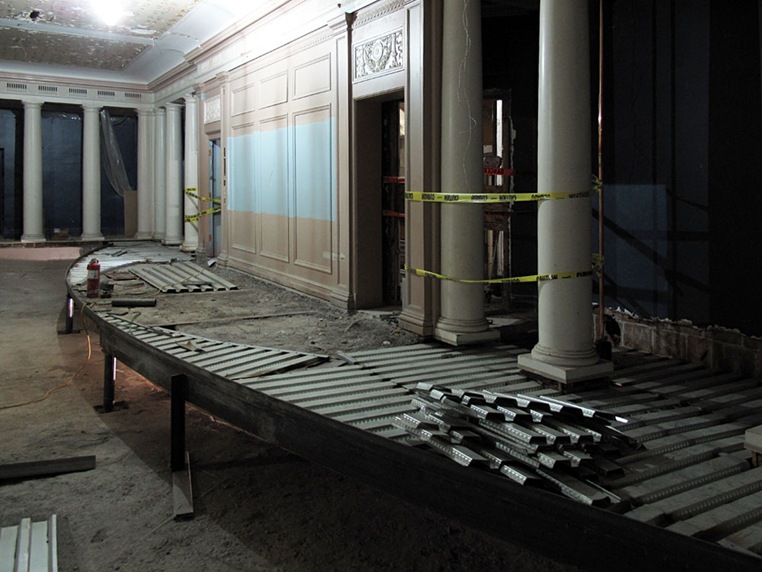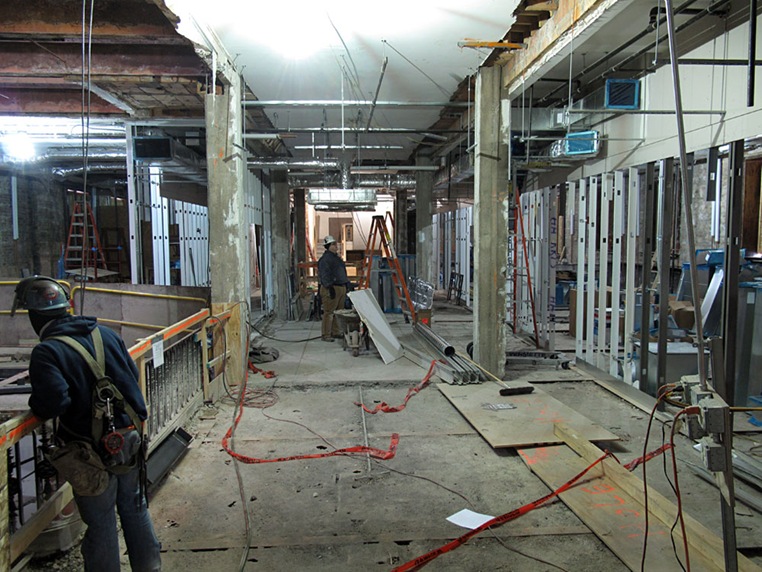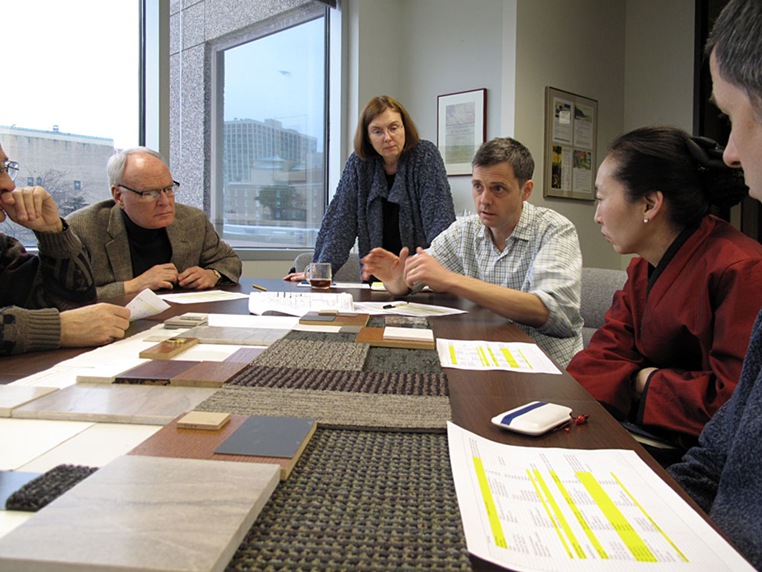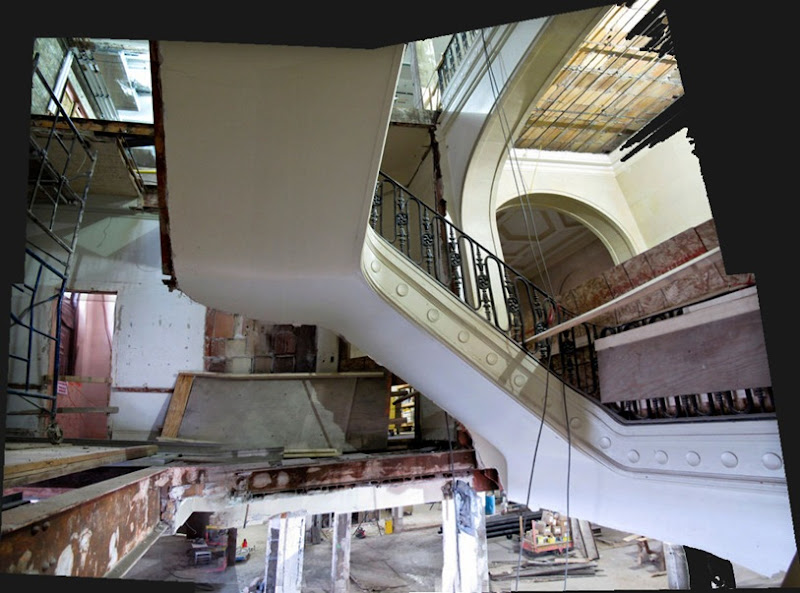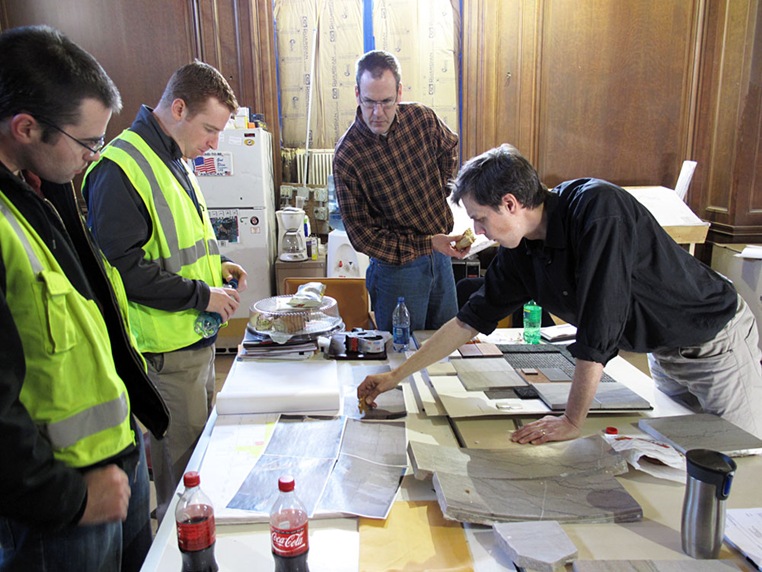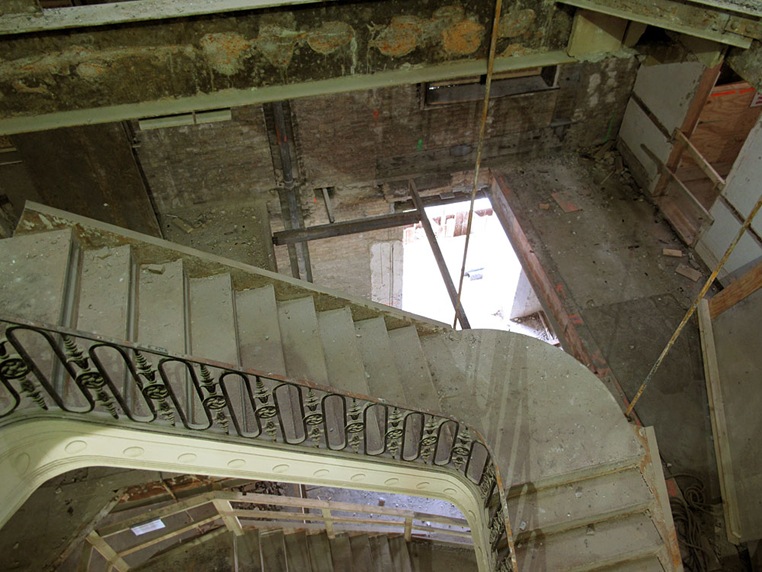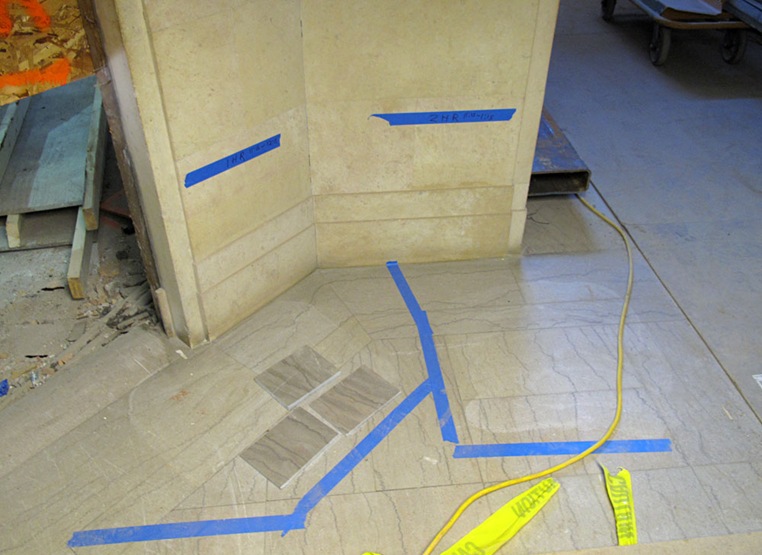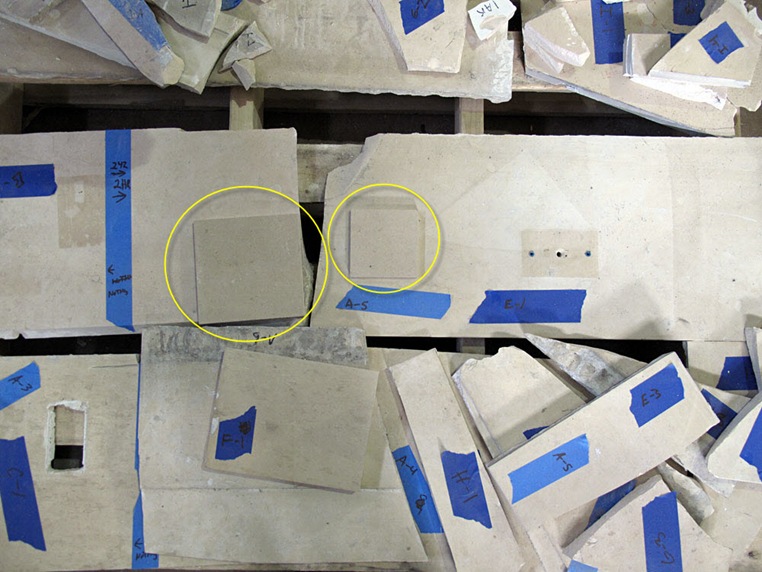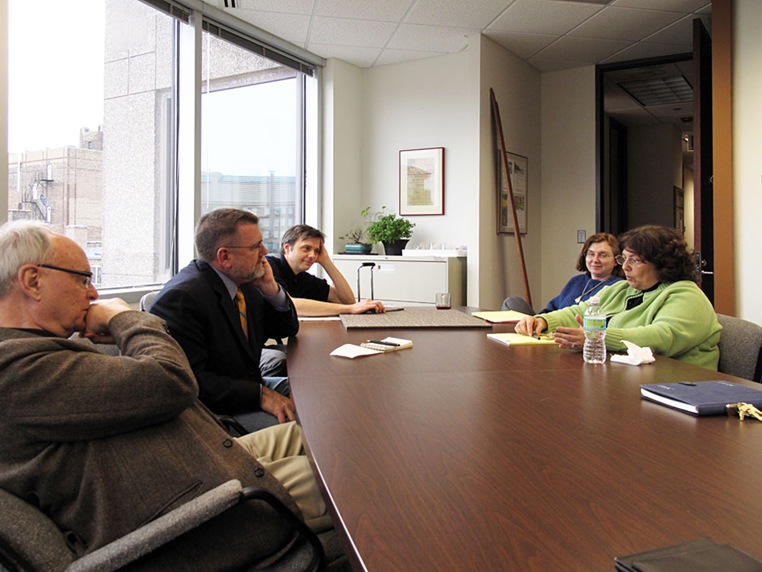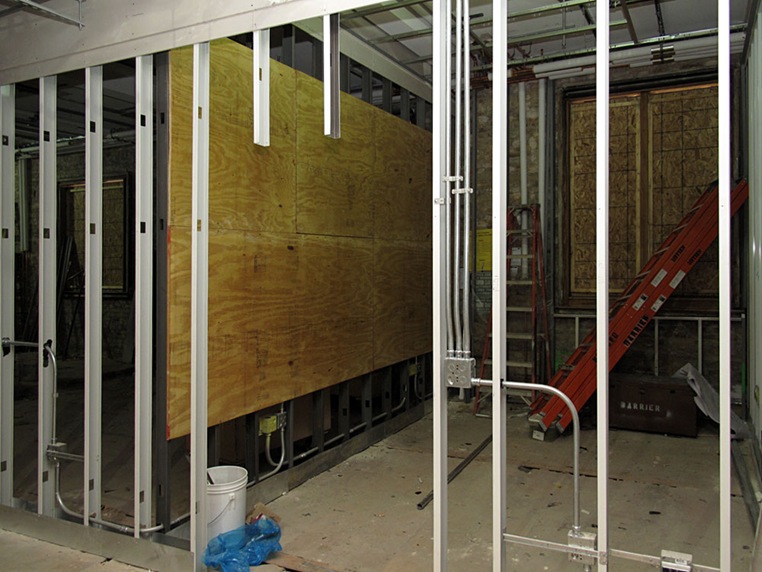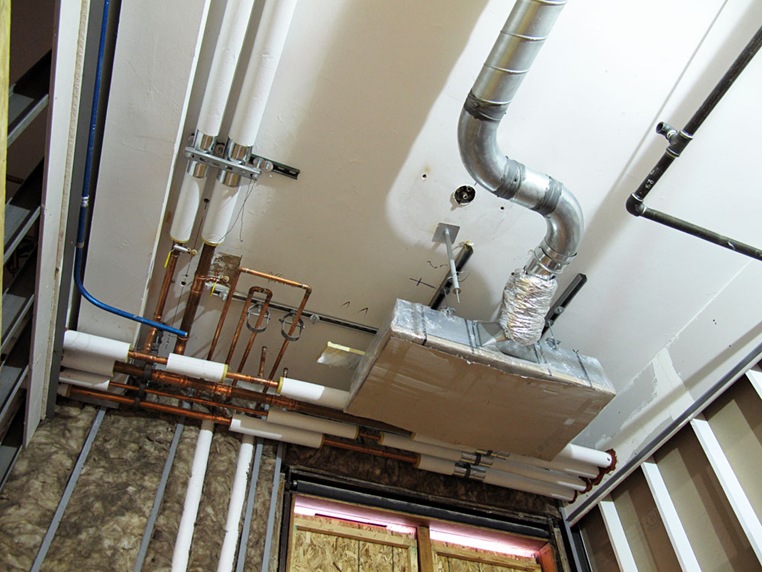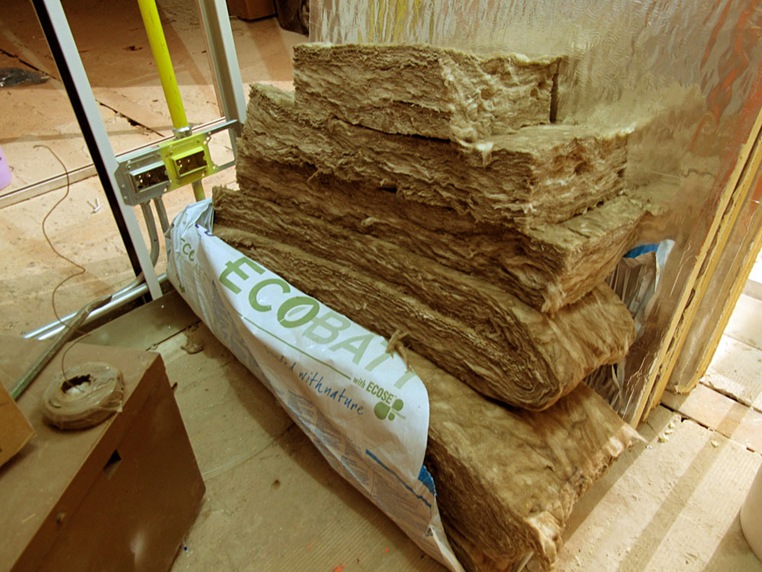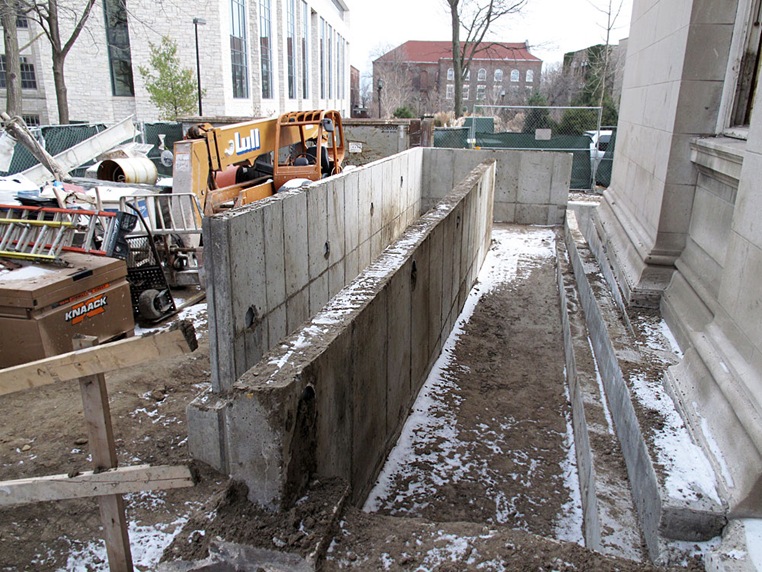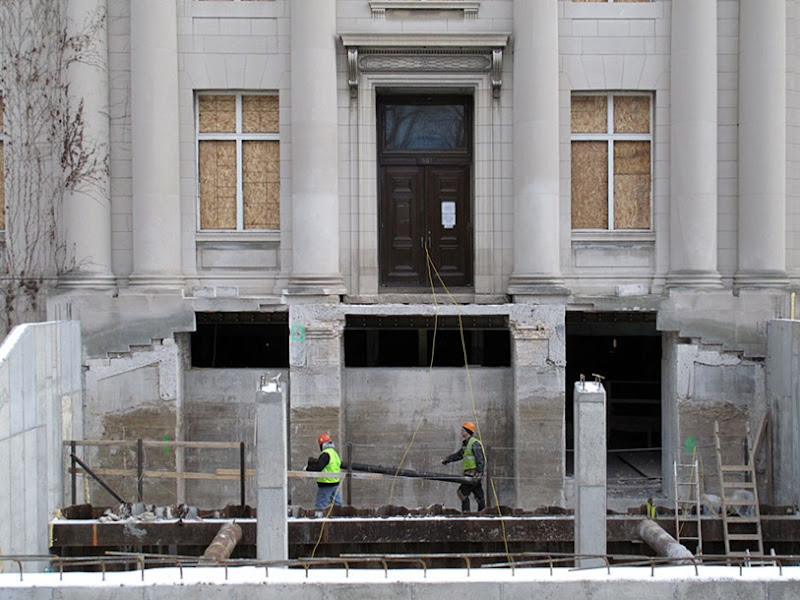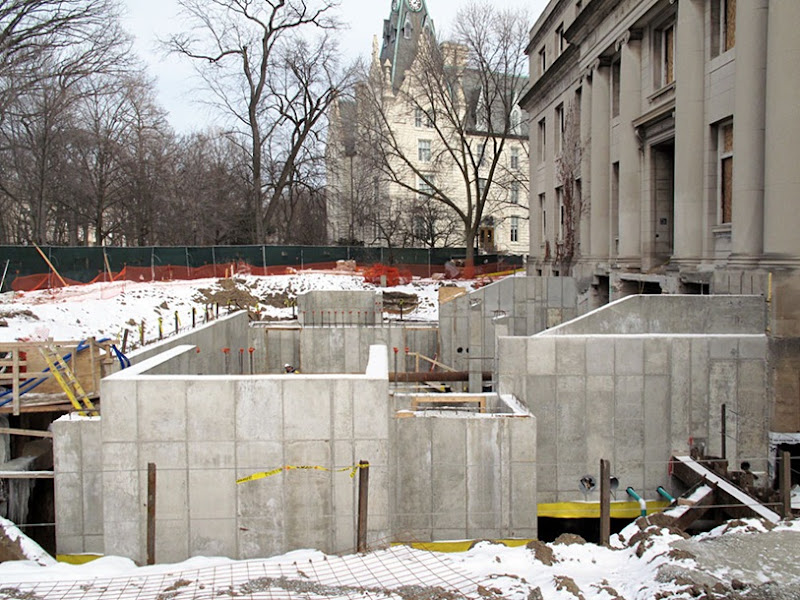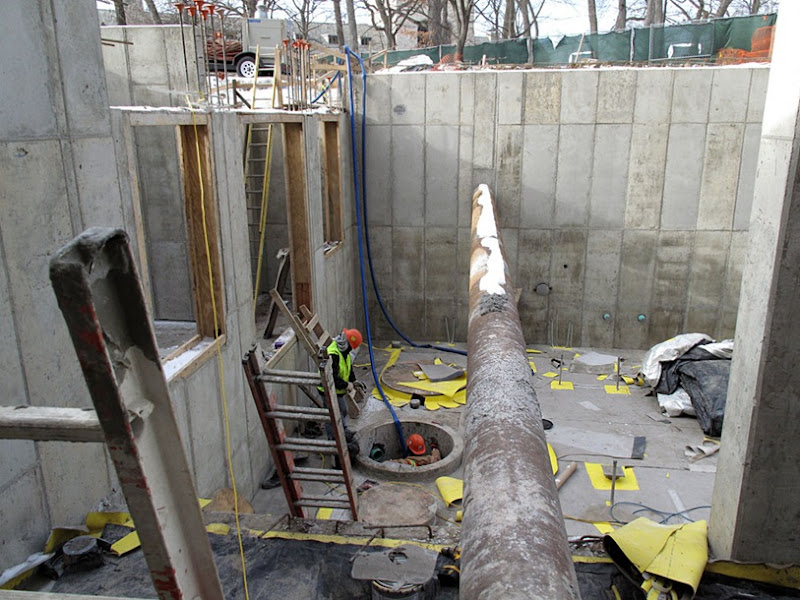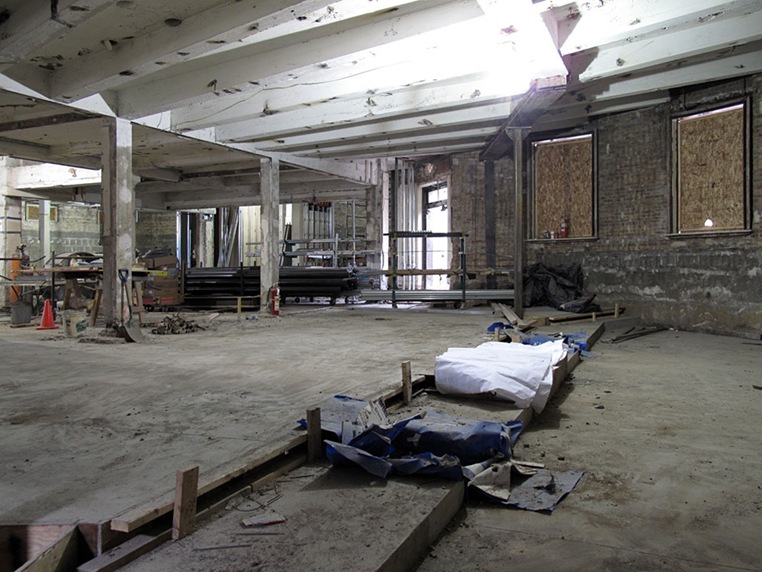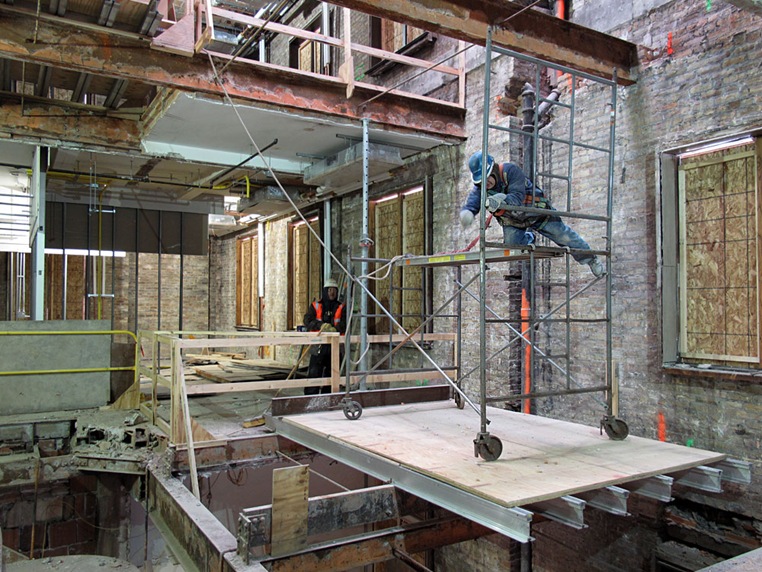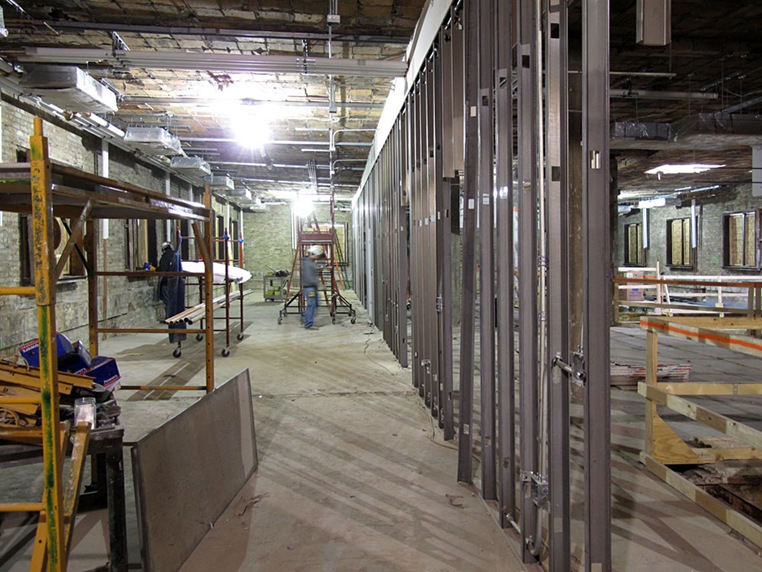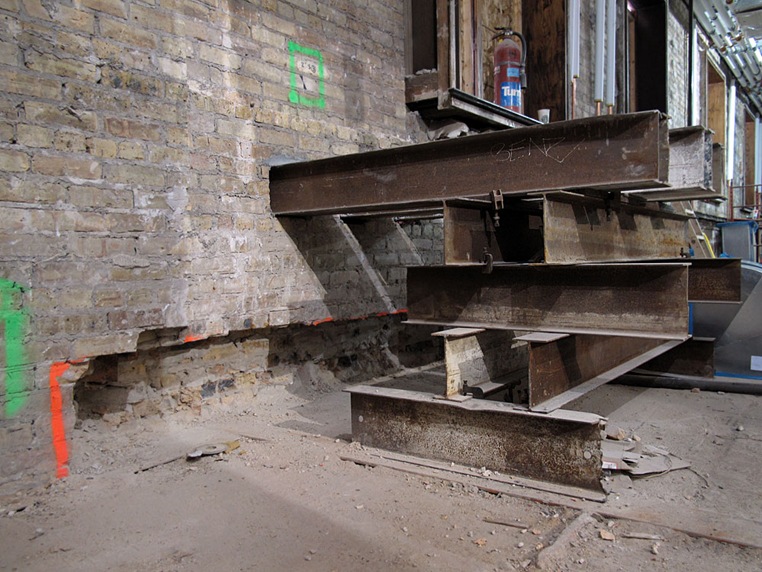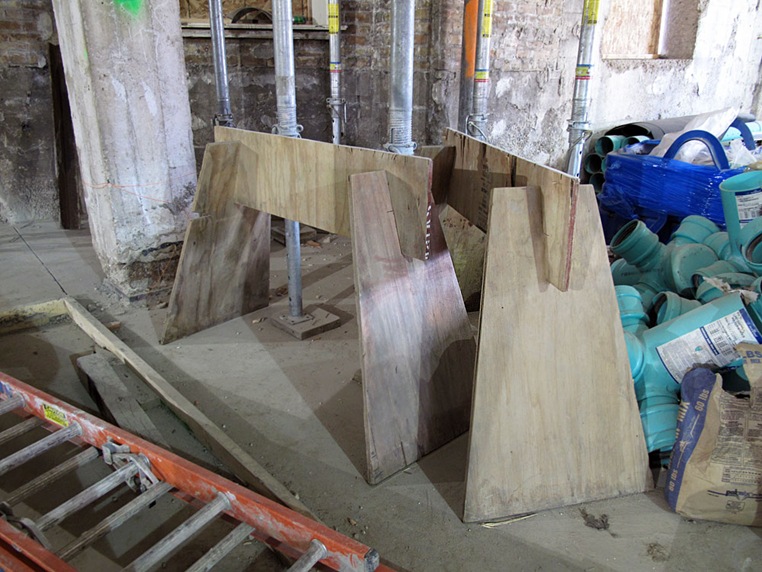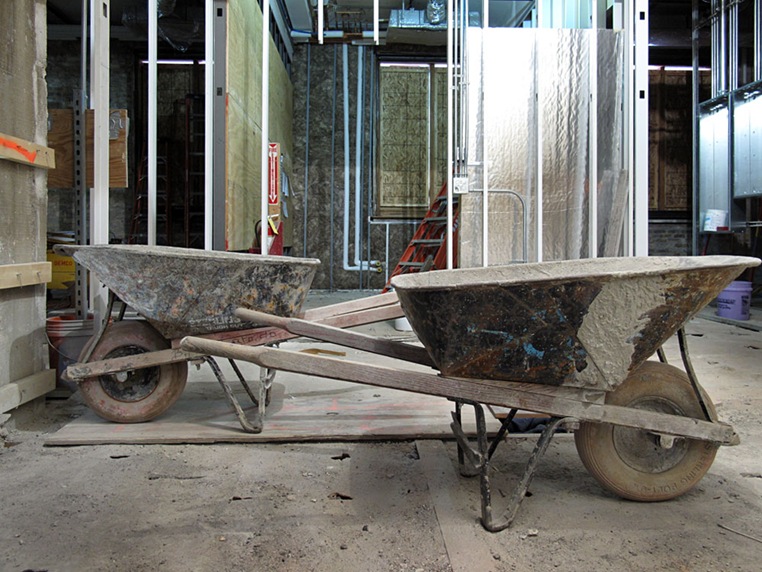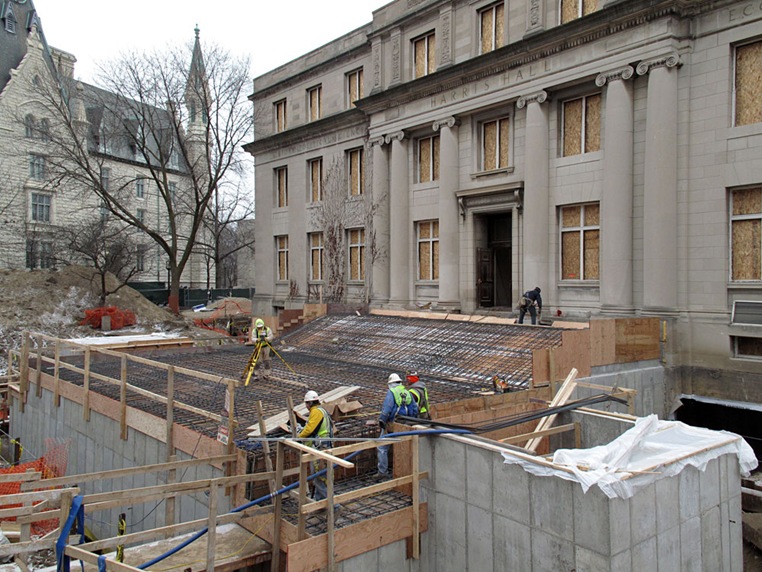 Decking installed over the mechanical room and steel reinforcement installation in progress.
Decking installed over the mechanical room and steel reinforcement installation in progress.
Wednesday, January 27, 2010
January 18, 2010
Below, the first of several large sections of air handling equipment waits on Sheridan Road to be lifted into the new subterranean mechanical room.
Thursday, January 14, 2010
January 14, 2010
Assembling pipe.
Above: Inside the new mechanical room.
Lower level.
Lower level.
The new, larger stage in the auditorium (room 107).
2nd floor.
Building Committee discussion of color selections.
Monday, January 11, 2010
Tuesday, January 5, 2010
January 5, 2010
Above, Mike Long and Don McDougal (Turner) watch as architect Dan Weese examines stone samples submitted by Mike VanEtten of Murphy Marble Co. (checked shirt). The existing stone floor in the 1st floor corridor, which we are restoring, is paved with Tennessee Marble (color: Quaker), as are the two stairwells. The south stair (see photo below) will be entirely re-built and extended to reach the 3rd floor, whereas the north stair and the 1st floor flooring are being cleaned and repaired. The 1st floor corridor walls are finished with a French Limestone. Walls, although seemingly in good condition, actually require a lot of work to restore. There are many cracked and loose pieces of stone. In addition, both the stone floors and walls have to be cleaned.
Above: The south stair hangs by heavy steel rods. The walls surrounding the stair have been entirely removed.
Above: Two things going on here. First, two portions of the 1st floor stone corridor floor and wall were cleaned using two different strengths of cleaner. Second, several stone samples were submitted for consideration, however, all were too dark.
Above: A pallet of loose and damaged French Limestone pieces that were removed from the 1st floor corridor walls. The two circled stones were submitted for consideration, but are two dark. Another submittal is necessary.
Above: Dreaded review marks on a shop drawing.
Shop Drawings? What are those? Glad you asked. The contract between Northwestern University and the contractor is based on a set of drawings and specifications. The specifications require that the contractor submit, for every component, certain information to the architect for review to assure compliance with the contract documents. Generically, this information is referred to as “shop drawings,” primarily because much of this information is submitted in the form of detailed, scale drawings. Sometimes such submittals consist of nothing more that a simple catalog sheet. Others involved dozens of large drawings. The shop drawing process also serves as the vehicle for making material and color selections. In the case of stone, for example, detailed drawings are submitted, showing the profiles of every stone, as well as a range of stone samples from which selections are made for actual installation. Often, shop drawings are approved on the first submittal. Sometimes, it takes several submittals before everything is confirmed to be correct. On a project of this scale there are many shop drawings. At this point, I have four “banker’s boxes” filled with shop drawings. See the next photo:
Above: One of four boxes of shop drawings in my office. Among the shop drawings are “coordination drawings,” which are drawings that several trades must accurately identify their work within the context of the work of other contractors. These usually include the work of the electrician, plumber, pipe fitter (heating & cooling), and tin knocker (ventilation ductwork made from sheet metal).
A January 4, 2010 meeting with the Building Committee to review carpeting samples.
Above: Carpet samples.
Above: A typical faculty office has been defined by steel studs. The plywood will support bookshelves. Note the progress of the electrician (conduits and junction boxes within the stud walls).
Looking up, in a faculty office, at the “chilled beam,” which delivers, depending on the season, either warm or cold air to individual offices. This design affords a remarkable degree of temperature control for occupants. Note the insulation within the exterior wall studs (lower left corner of the photo).
“Rock wool” insulation. It’s green in spite of the fact that it appears brown.
New concrete walls define the accessible ramp at the north side of the building. These will eventually be clad with stone.
West elevation: Note the opens that have been cut through the concrete foundation wall. This will accommodate ductwork and piping between the new subterranean mechanical room (foreground) and the lower level.
New subterranean mechanical room, viewed from the south.
Working in the new mechanical room. The large tube to the right of the hardhat in the sump pit is one of two temporary braces that will eventually be removed.
The new Classroom L-07. The floor is stepped to provide superior sight lines of the instructor.
Workmen erecting a temporary scaffold between between the 2nd and 3rd floor. (1-5-09)
3rd floor (1-5-09)
The red arrow is pointed at a portion of a window jamb that still has the original stain and varnish finish. The yellow arrow below it points to a jamb that is partially stripped. The left arrow points to a mullion that has been stripped to bare wood. The process is slow and laborious; yet slower in cold weather.
Temporary steel supports to facilitate installing a beam.
Creative version of job-built saw horses.
It’s the end of the day.
